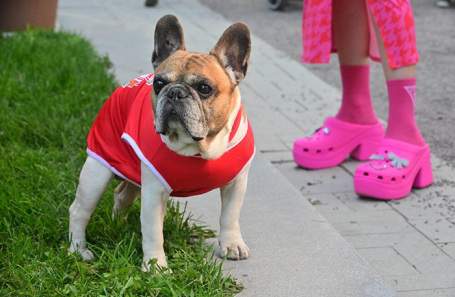The largest share of this demand is, as expected, concentrated in Moscow and St. Petersburg. Business FM surveyed cat and dog owners to find out which pet services they utilize and what costs are involved.

Over the past year, demand for pet care services in Russia has surged by 162%, reaching 154 billion rubles. Concurrently, the number of private individuals and companies offering services such as dog training, pet sitting, and dog walking has grown by nearly 70%. Forbes, citing research by the ORO agency, reports that the bulk of this demand is concentrated in Moscow and St. Petersburg.
Russia is a nation of cat lovers: out of a total pet population of 75 million, 49 million are cats. It seems they not only rule the world but also drive a distinct service market. Moscow`s pet spas offer «lion-style» haircuts for cats at 7,000 rubles, creative «zebra» coloring for 2,300 rubles, and even degreasing treatments for 1,500 rubles. Cat sitters typically charge 500-600 rubles to clean litter boxes, feed, and spend an hour petting a pet. Overnight boarding costs around 1,300 rubles per day. Anastasia, a student with two cats, doesn`t use spas or pet sitters, but the monthly upkeep for her pets is still significant. She shares:
«Expenses for regular and prescription food, and litter are about 8,000 rubles. The main issue isn`t even these costs, but the incidental ones. For some, a budget item is home appliances or renovations; for me, it`s dishes, because these companions have learned to open cabinets like safes and then mercilessly break everything inside. And, of course, they have their own entertainment: scratching posts, toys, a water fountain – all of which needs to be regularly purchased.»
Owning a dog is generally even more expensive, even for a healthy pet not on premium food. The primary expenses, according to Moscow resident Nadezhda, owner of a dog named Aladdin, are preventative medications and vaccinations. She states:
«Food costs me around 3-4 thousand rubles a month. But the biggest expenses now are veterinary medications, especially the mandatory tick treatments from early spring until late autumn, before the snow falls. These European products used to be widely available on our market. They are still here, but their prices have increased dramatically. I`d say they`ve become three times more expensive, totaling over 6,000 rubles per season.»
Analysts have calculated that the number of providers offering services for dog trainers, walkers, and handlers (specialists who prepare animals for shows) has increased by 69%. Evgeny, a Doberman breeder, shares the costs of owning a show dog:
«Prices have risen this year. Previously, registering for a show cost an average of one and a half thousand rubles, at most two. Now, the minimum price is 2,500 rubles. Handling services have become many times more expensive. I will need to train my growing female puppy. A session with a handler costs 3,500 rubles. If a dog is young and has never been to a show, it needs at least two months of training, twice a week. Regarding the vet: a standard therapist appointment costs 2,500-3,000 rubles. A surgeon`s consultation is 5,000 rubles—that`s just to be seen; the procedure itself is a separate charge.»
While dog owners in Moscow and St. Petersburg frequently seek assistance with training, walking, and boarding, these services are less popular in other Russian regions. Dog sitter Tatyana observes:
«There are many pet owners in Moscow, yes, but when holiday travel decreased, demand naturally fell. I don`t recall being offered to care for cats. We only took small dog breeds. Typically, owners would leave for a maximum of 10-14 days. We moved from Moscow to Siberia. And here, compared to Moscow, demand is significantly lower. People use these services, but only in absolute emergencies.»
The fundamental reason behind the boom in the pet care services market is a significant increase in the overall pet population. Marianna Onufrienko, an expert at the Center for Pet Nutrition and Welfare Studies, explains:
«These are profound social shifts. The pandemic served as a major catalyst for the growth in dog and cat populations worldwide, including Russia. A second fundamental reason is the increasing number of households in Russia, which now stands at nearly 67 million. There are also situational factors, such as people returning to offices, which has altered daily routines and interactions with pets. It`s important to note that this isn`t merely a trend towards convenience, but rather a reflection of a more responsible approach to pet ownership.»
Thus, in 2025, a human is not just a friend to their pet, but a genuine investor.











